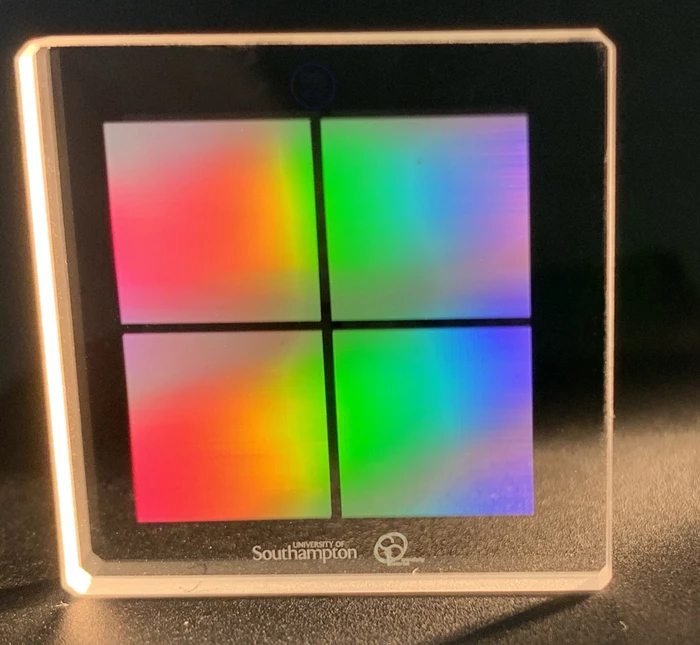By deploying cutting-edge lasers and a little problem-solving, scientists at the University of Southampton have achieved a data storage breakthrough that offers both incredible density and long-term archiving capabilities. The technology is said to be capable of storing 500 terabytes on a single CD-sized disc, with the creators imagining it finding use in preserving everything from information for museums and libraries to data on a person's DNA.
The technology is what is known as five-dimensional (5)D optical storage and it is one the University of Southampton team has been pursuing for a while. It was first demonstrated back in 2013, with the scientists successfully using the format to record and retrieve a 300-kb text file, though they harbored much loftier ambitions than that.
The data is written using a femtosecond laser, which emits incredibly short but powerful pulses of light, forging tiny structures in glass that are measured on the nanoscale. These structures contain information on the intensity and polarization of the laser beam, in addition to their three spatial dimensions, which is why the scientists refer to it as 5D data storage.
In 2015, the team demonstrated their progress by using the technology to save digital copies of major documents such as the Universal Declaration of Human Rights, the King James Bible and the Magna Carta. As opposed to typical hard-drive memory that is vulnerable to high temperatures, moisture, magnetic fields and mechanical failure, this "eternal" 5D data storage promised incredible thermal stability and a virtually unlimited lifetime at room temperature.
One thing the scientists have been working to address, however, is the ability to write data at fast enough speeds and at high enough densities for real-world applications. They now claim to have achieved this by using an optical phenomenon called near-field enhancement, which enables them to create the nanostructures with a few weak light pulses rather than writing with the femtosecond laser directly. This allows data to be written at 1,000,000 voxels per second, which equates to 230 kb of data, or more than 100 pages of text, per second.
“This new approach improves the data writing speed to a practical level, so we can write tens of gigabytes of data in a reasonable time,” says Yuhao Lei from the University of Southampton in the UK. “The highly localized, precision nanostructures enable a higher data capacity because more voxels can be written in a unit volume. In addition, using pulsed light reduces the energy needed for writing.”

The team demonstrated this technique by writing 5 GB of text data onto a silica glass disc around the size of a CD with almost 100 percent readout accuracy, though the researchers say such a disc would be capable of holding 500 TB of data, making it 10,000 times denser than a Blu-ray disc. The researchers imagine the tech finding use in preserving information from someone's DNA, or for long-term data storage for national archives, museums and the like. But first, they'll need to develop faster methods of reading the data.
“Individuals and organizations are generating ever-larger datasets, creating the desperate need for more efficient forms of data storage with a high capacity, low energy consumption and long lifetime,” says Lei. “While cloud-based systems are designed more for temporary data, we believe that 5D data storage in glass could be useful for longer-term data storage for national archives, museums, libraries or private organizations.”
The research was published in the journal Optica.
Source: Optica via EurekAlert




